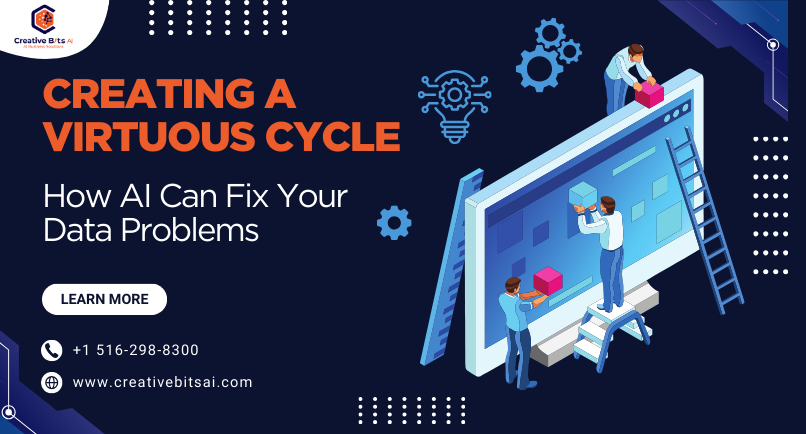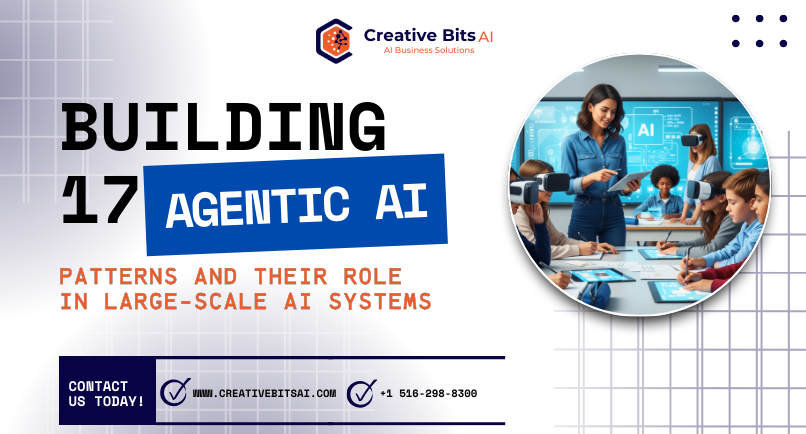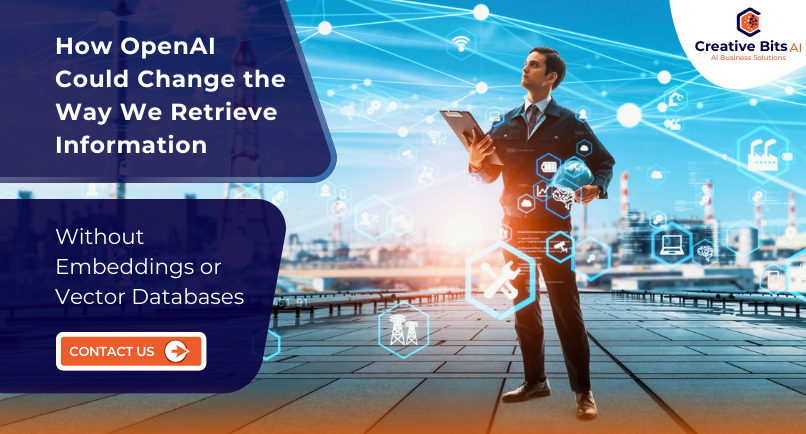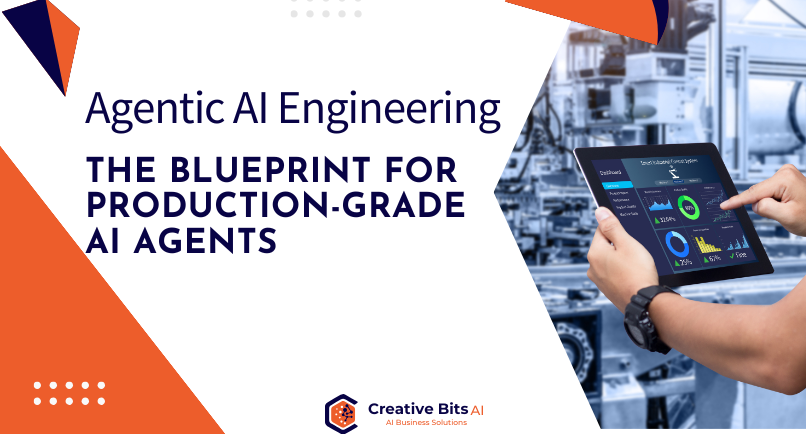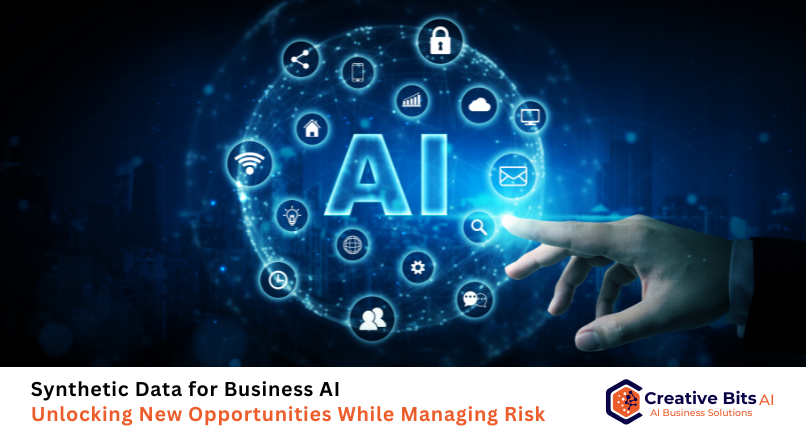In traditional data science, the saying “Garbage In, Garbage Out” (GIGO) has been a big concern for AI projects. It means that if the data is incorrect, missing, or biased, even the best algorithms cannot produce accurate results.
While this was once true, it doesn’t fully demonstrate the full extent of today’s AI’s capabilities. Instead of waiting for perfect data to come along, smart companies are changing things by using AI to improve the data itself.
These AI tools can now fix problems like mixed-up information, add more meaning, spot strange patterns, and even guess what’s missing with great accuracy.
This change starts a positive cycle. Instead of letting bad data stop progress, teams can use AI models that get better every time they run. Better data leads to more accurate models, which then give clearer insights. It helps make better decisions and improves the quality of new data collected. It’s like a loop where AI both uses and improves the data it works with.
The Data Paradox: Garbage In, Garbage Out
For many years, the phrase “Garbage In, Garbage Out” or GIGO has been a constant reminder in boardrooms and data teams. It points out a simple but serious fact: if the information you start with is wrong or messy, the results you get will also be wrong.
Now, with AI becoming more common, this problem is even bigger. AI systems don’t just look at data—they learn from it. If you give them wrong, repeated, or unfair data, you don’t just get poor results—you create widespread issues.
Here’s the irony: many businesses slow down their AI projects, hoping for an ideal “perfect dataset,” which ends up keeping them stuck in digital stagnation. The catch is, without AI, data seldom gets cleaned up.
AI isn’t just a user of data—it can also be the one responsible for keeping it organized and maintained.
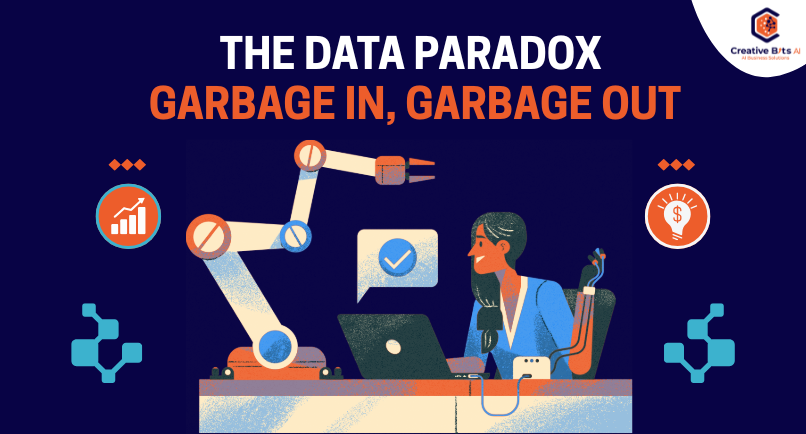
Picture a world where AI isn’t just struggling with poor data but actually helps fix it.
What if, instead of worrying about garbage in, garbage out, companies used AI to spot problems, fix mistakes, fill in missing information, and even figure out what good data should look like depending on the situation?
It’s time to stop seeing AI as a victim of poor data and start thinking of it as the key to change. After all, the real answer to bad input might be smart output.
The Counterintuitive Solution: AI as Your Data Steward
Many companies are shy about using AI, worried about the well-known issue of getting bad results from bad data.
But imagine if AI wasn’t just someone who uses data—instead, it acted like a cleaner, a teacher, and a quality checker all at once. That’s the smart twist of using AI for data governance. It doesn’t just rely on already clean data—it actually helps make the data clean.
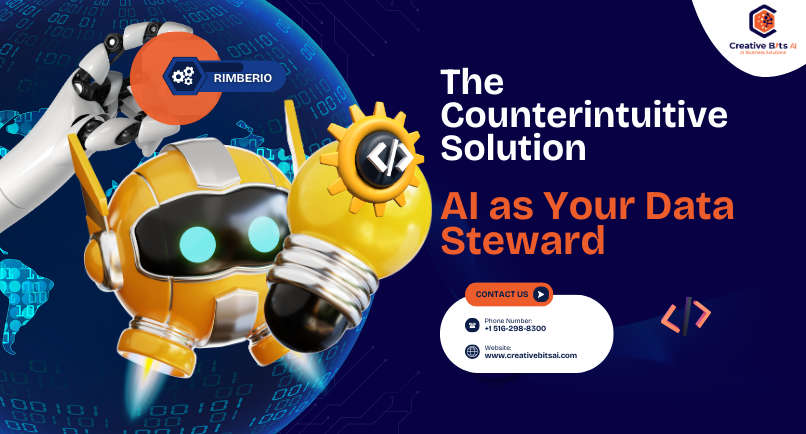
Modern AI systems are becoming better at cleaning, improving, and checking data as it’s being processed. Machine learning models can spot problems that traditional systems based on fixed rules might miss, such as fake financial entries or mismatched customer information.
These models learn from patterns instead of just following set instructions. Also, Natural Language Processing tools can find duplicate customer records by realizing that names like “Bob Smith,” “Robert Smith,” and “R. Smith” could all refer to the same person, making it easier to eliminate duplicates on a large scale.
In addition, tools like Informatica CLAIRE or Talend Trust Score continuously check data reliability in real-time, using AI to predict the chance of data decay or mismatches in important fields. They send alerts to data stewards before these issues affect analytics.
This creates a self-enhancing system: improved AI models lead to better data, and better data makes AI work even better. It’s a cycle where poor data quality becomes a source of competitive advantage.
AI doesn’t pause for everything to be perfect. It helps you move forward by cleaning data as you work, checking your actions in real time, and offering better ways to organize things as it gains knowledge.
Using AI for proactive data governance isn’t something that will happen someday—it’s something you can do right now. Let the system learn not just from what you know, but also from what you get wrong, and create a data environment that can fix itself over time.
Mechanics of the Cycle: From Raw Chaos to Refined Intelligence
Fixing data with AI isn’t magic—it’s just a mechanical process. Like any well-working machine, it needs you to understand how each part fits together. The data-AI virtuous cycle works in three steps: improved data leads to smarter AI, which creates more accurate insights, which then help collect even better data.
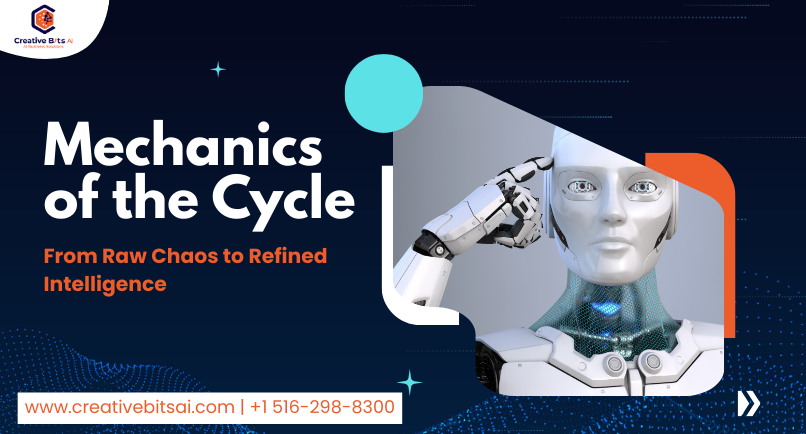
Step 1: Better Data Trains Better AI
Clean, organized, and properly labeled data helps AI models learn to tell the difference between useful information and irrelevant noise. For example, in supervised learning models, having data that is clearly labeled enables the system to make accurate predictions and recognize patterns.
While the quality of this initial data is important, it doesn’t need to be perfect or complete—it just needs to be good enough to begin the process.
Step 2: AI Generates Better Insights
Once trained, AI starts doing what it does best: automating the process of gaining insights. It can group customers into different segments, spot fraudulent activities, highlight unusual patterns, or suggest ways to improve operations, all in real-time.
Tools like Microsoft Azure Synapse and Google Vertex AI offer dashboards that show connections that are hard for humans to see. AI doesn’t just point out problems—it also offers solutions.
Step 3: Insights Drive Data Capture
Businesses can improve how they collect data by using the practical information they get.
For instance, if AI shows that text from customer feedback is playing a big role in understanding why customers leave, teams might begin labeling tickets more accurately or changing how surveys are designed.
These feedback loops develop naturally—over time, the system becomes more efficient, and the company’s processes also get better.
This loop keeps getting better on its own: flawed data starts the process, but AI makes each round better than the last. It’s not about beginning with perfect data; it’s about having a clear path to follow. Once it’s going, the cycle builds more value and speeds up digital growth.
Examples in Action: Turning Data Decay into Data Dynamism
To make the cycle easier to understand, let’s see how AI is already helping solve real-world data issues through a positive cycle—cleaning, adding value to, and giving context to messy data in ways that old systems can’t do.
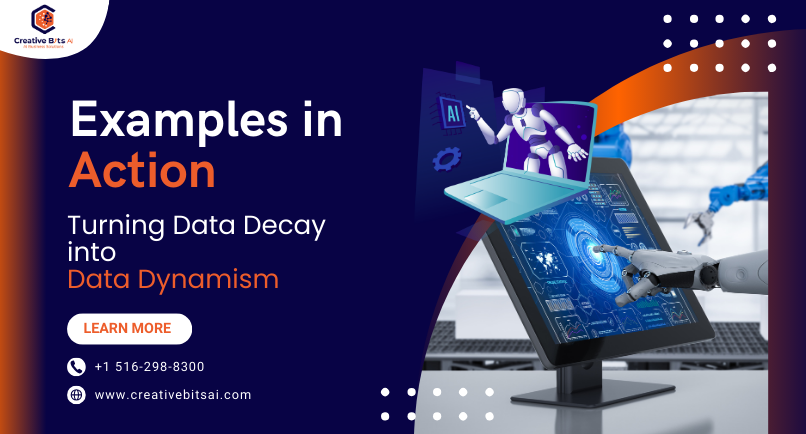
1) Customer Feedback Transformation
Consider an online store that received a lot of customer reviews in an unorganized way. At first, the data had spelling mistakes, mixed-up opinions, and unclear statements.
By using NLP tools, the company could fix the text, find common problems mentioned by customers, and automatically sort them into clear categories like “delivery problems” or “quality issues”.
As time went on, these insights from AI helped the company improve its feedback forms, making them more organized and less confusing from the start.
2) Healthcare Data Enrichment
In healthcare, AI has been used to enhance Electronic Health Record (EHR) data, as errors in this information can be life-threatening.
IBM Watson used AI to find missing information, offer suggestions for filling in data gaps, and connect patient records between different departments.
As the AI became more accurate, healthcare professionals grew more confident in relying on digital records. This led to improved data entry practices, creating a cycle where clinical accuracy and trust in the system reinforced each other.
3) Sales Forecasting in Retail
A worldwide retail company used AI to fix mistakes in their sales records, such as incorrect product codes and wrong prices. As time went on, machine learning models not only fixed past data but also detected possible problems in real time, leading to quicker fixes in the systems above.
This improvement in data quality helped create more accurate predictions about customer demand, which in turn made stock management more efficient—providing better information back into the overall process.
These examples show a strong idea: AI doesn’t just work with data—it makes it better. Every time it goes through the process, the insights get better, and the original data also improves, making the system more able to fix itself over time.
The Role of AI in Preventing Data Decay
In today’s constantly changing digital world, data decay is a hidden problem that quietly affects information over time. As records become outdated, formats stop working, and the reasons behind the data change, the quality of the data starts to drop.
This can happen because of things like people leaving the company, customers no longer using a service, old systems not connecting properly, or categories not matching up anymore.
Even the best-organized data sets can become less trustworthy over time, leading to missed chances, wrong predictions, and weaker decision-making.
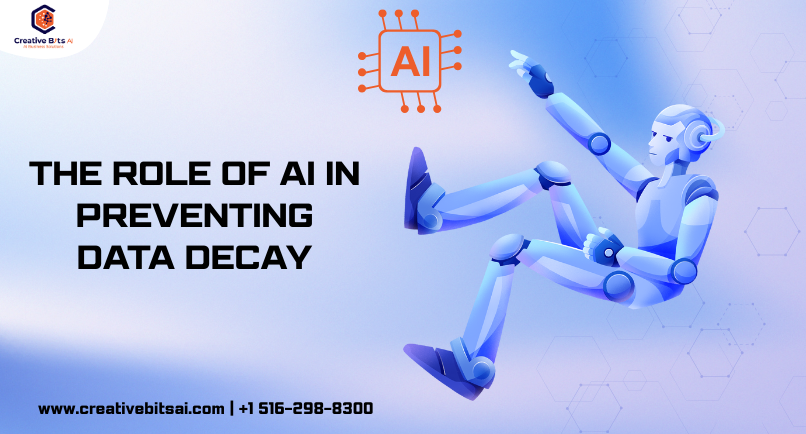
Artificial Intelligence (AI), however, provides a strong solution to this entropy. It moves beyond just being a tool for analysis and becomes an active guardian of data—constantly checking, rating, and cleaning data pipelines as they happen in real-time.
One important use of this is called drift detection, where AI systems keep an eye on changes in the data they receive. If the patterns in the data start to change — like if customer behavior shifts suddenly — the AI notices this as “concept drift.”
This means there might be a gap between the data the model is seeing now and the data it was trained on earlier. This helps companies take action before their performance starts to drop.
At the same time, automated retraining systems use real-time feedback loops to improve models as they receive new and important data. This ability to adjust helps keep the systems in line with today’s business needs without requiring people to manually update large datasets.
Another useful feature is temporal validation. AI can give time-based decay scores to data entries, like user profiles, system logs, and sales transactions. When these scores reach certain limits, it can start the process of updating, re-checking, or storing the data away.
The end outcome? Organizations shift from being reactive to becoming data agile. Rather than just responding to problems shown by falling KPIs, they develop the ability to foresee issues and opportunities.
By having AI constantly care for the data, companies ensure their information stays accurate, dependable, and meaningful over time.
In a world where up-to-date information is valuable, AI doesn’t just solve data issues—it protects the system from problems that could come up later.
Final Thoughts: Let AI Create the Path to Data Maturity
Many businesses put off using AI because they wrongly think their data needs to be perfect first. This old way of thinking sees AI as something that just waits until everything is neatly organized, all formats match up, and all data structures are clearly defined.
But that’s not what AI is like today. In reality, modern AI works best in real-world situations, not in controlled environments. It doesn’t wait for everything to be perfect—it actually helps make things perfect.
Think of AI not as a picky guest, but as a busy gardener. You don’t have to create a perfectly organized data garden before it arrives. As soon as AI is put to work, it starts helping by finding problems, suggesting ways to organize things, pointing out repeated entries, filling in missing pieces, adding more background information, and even suggesting new data to bring in. It’s both helped by better data and helps improve the data at the same time.
By starting small, putting AI in place early, and continuously improving, organizations can start a positive cycle: better AI produces better insights, which lead to smarter decisions, which create cleaner and more useful data. This ongoing feedback loop helps build scalable and constantly improving intelligence.
Waiting for perfect data holds up more than just the launch; it also causes delays in results. Instead, use AI to improve continuously and grow wiser. This is the core of being fully AI-ready-not a final goal, but a continuous drive forward.
In short, AI doesn’t need perfect data. It just needs to get started. The sooner you bring it into your environment, the quicker it can turn data into a valuable, active strategic tool. Stop chasing perfection and let us at CreativeBits AI help you turn what you have into a real advantage.
